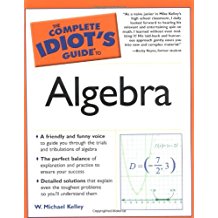Equations vs. Inequalities
Equations vs. Inequalities
Since the two sides of an inequality are not equal, there's got to be a reason why. The obvious explanation is that if the sides don't have the same value, then one of them must be larger; in fact, knowing which side is larger is very important. Therefore, you'll use one of four inequality symbols (in place of an equal sign) when writing an inequality statement. These symbols fulfill the important responsibility of identifying the larger side, and also tell you whether or not there is even a remote possibility that the sides could ever be equivalent:
Critical Point
There is a fifth inequality symbol, , which means "not equal to." For example, you could correctly state that 10 4 (10 is not equal to 4), which is true but not very helpful. It would be better to say 10 > 4 (10 is greater than 4), because that statement explains why the quantities are unequal.
Kelley's Cautions
When it comes to negative numbers, the larger a negative a number is, the less it is considered (which almost seems backward). Therefore, -17 -9.
- <: a="" example="" for="" has="" indicate="" is="" left="" less="" literally="" means="" on="" quantity="" right="" side="" side.="" smaller="" statement="" symbol="" than="" than.="" that="" the="" this="" to="" use="" value="">
- >: If you flip the less than symbol around, you get the "greater than" symbol, which means the exact opposite of the 57.
- ¤: This means "less than or equal to"; basically, it means the same as the
- ¥: The "greater than or equal to" symbol is similar to the less than or equal to symbol, in that it also allows for the possibility of equality. Therefore, the statements -5 ¥ -12 and -15 ¥ -15 are both true.
Critical Point
Here's one way to remember which inequality sign is which: The less than symbol points left. Just remember "less goes left."
Example 1: Are the following statements true or false?
- (a) -7 > -1
- Solution: False; since 7 is larger than 1, -7 is less than -1.
- (b) 1 ¥ 1
- Solution: True; 1 is either greater than or equal to 1 (only one of those two conditions can be true at a time, and it's true that 1 is equal to 1).
You've Got Problems
Problem 1: Are the following statements true or false?
- (a) -3
- (b) 5

Excerpted from The Complete Idiot's Guide to Algebra © 2004 by W. Michael Kelley. All rights reserved including the right of reproduction in whole or in part in any form. Used by arrangement with Alpha Books, a member of Penguin Group (USA) Inc.
You can purchase this book at Amazon.com and Barnes & Noble.







